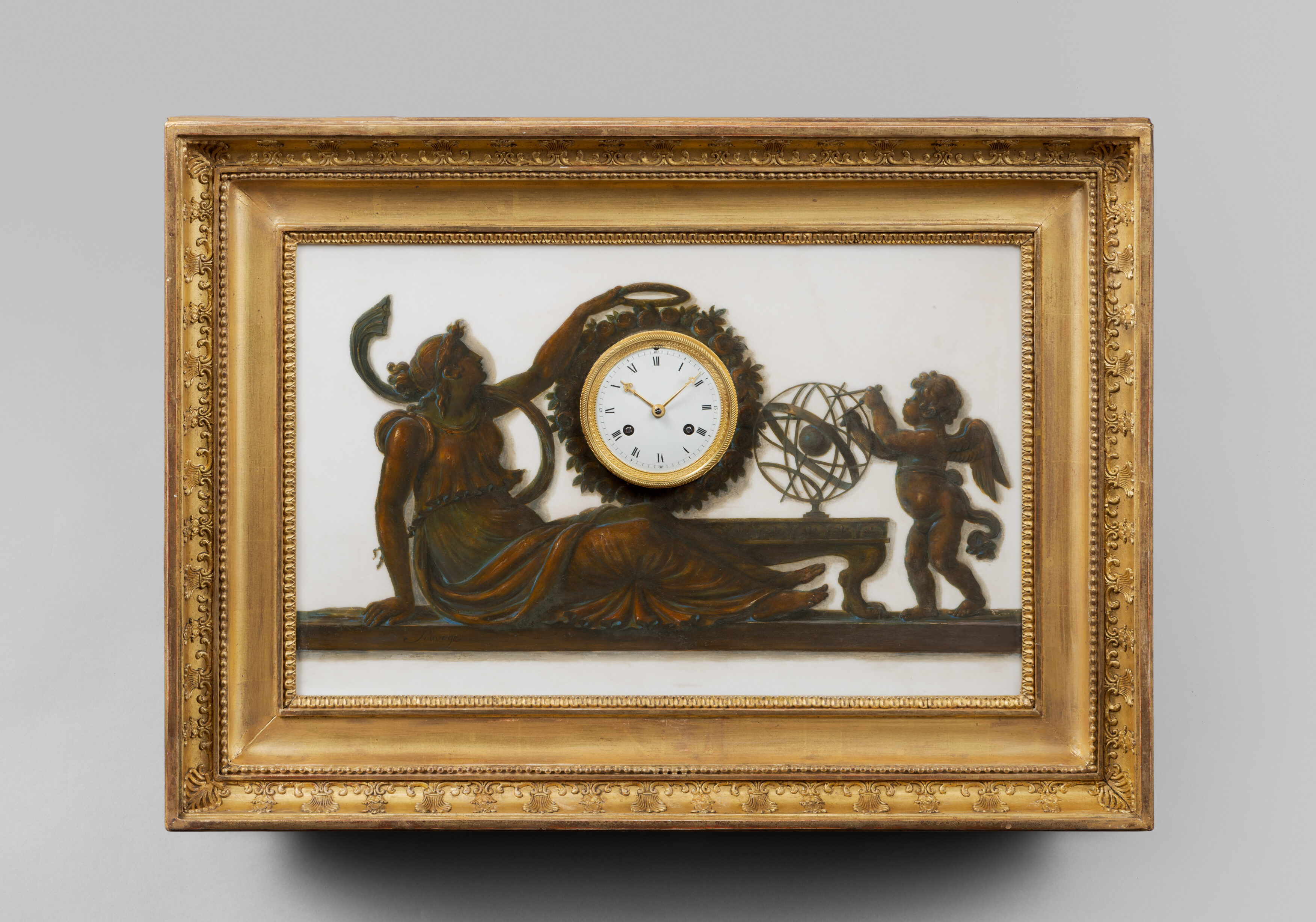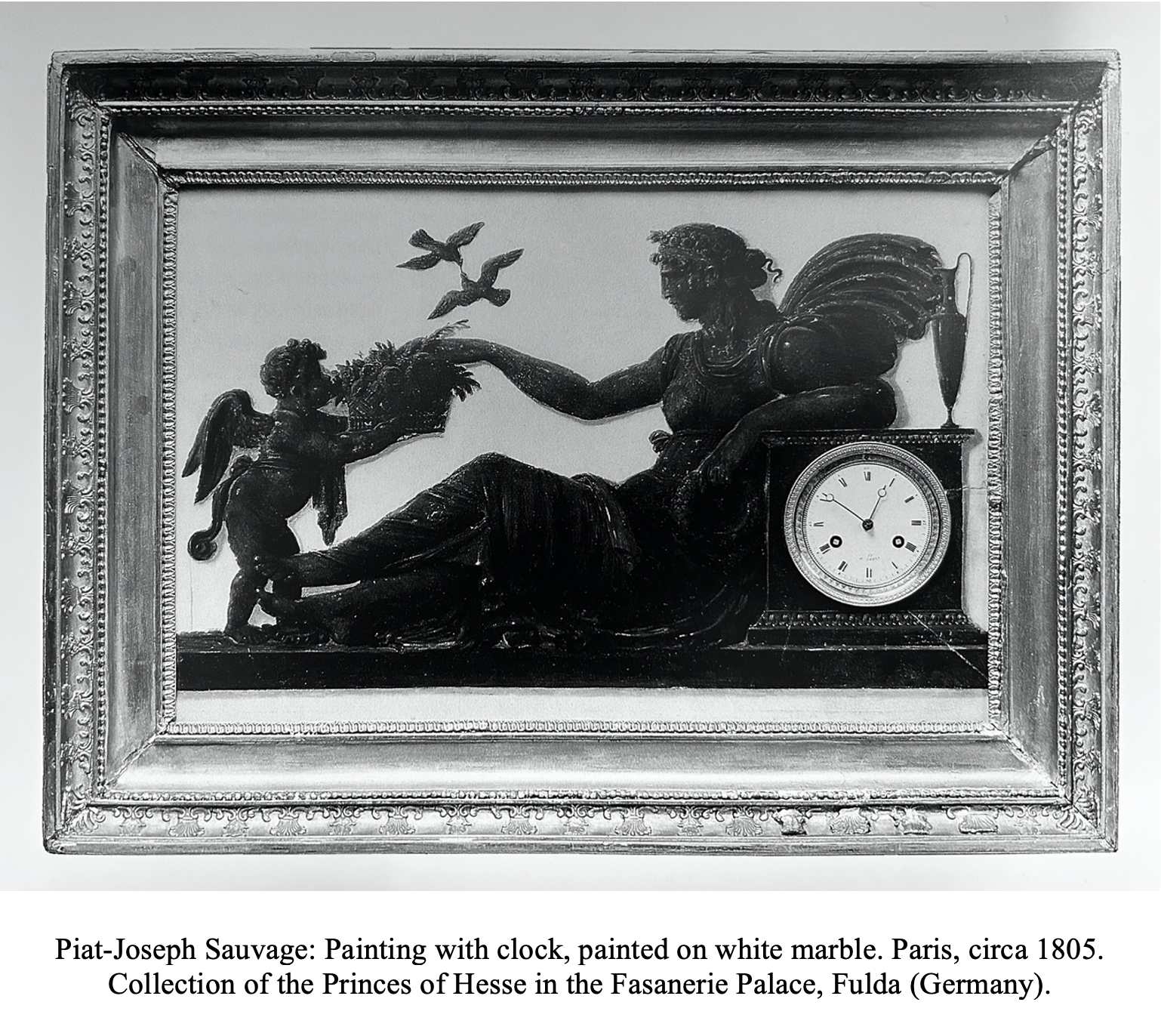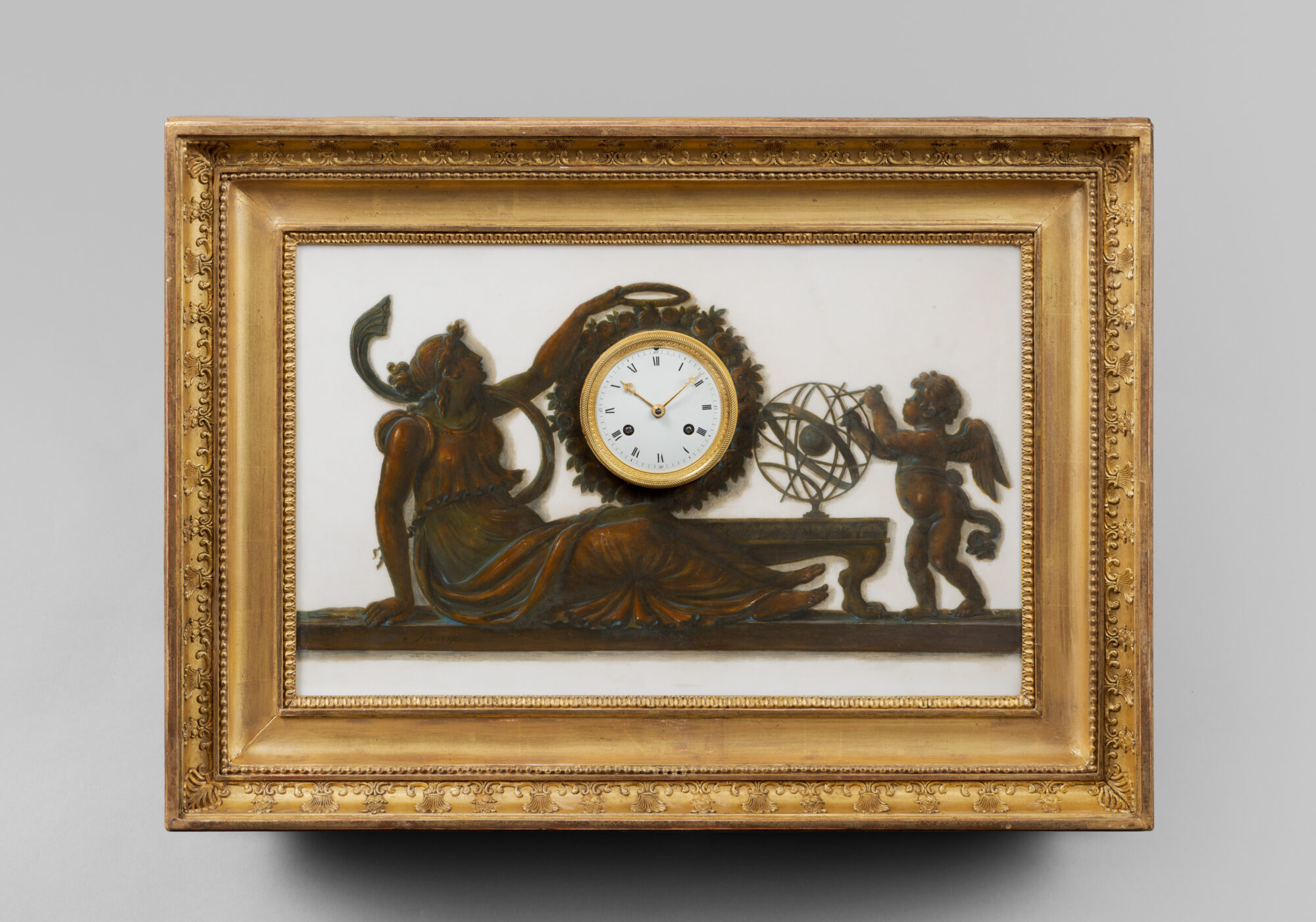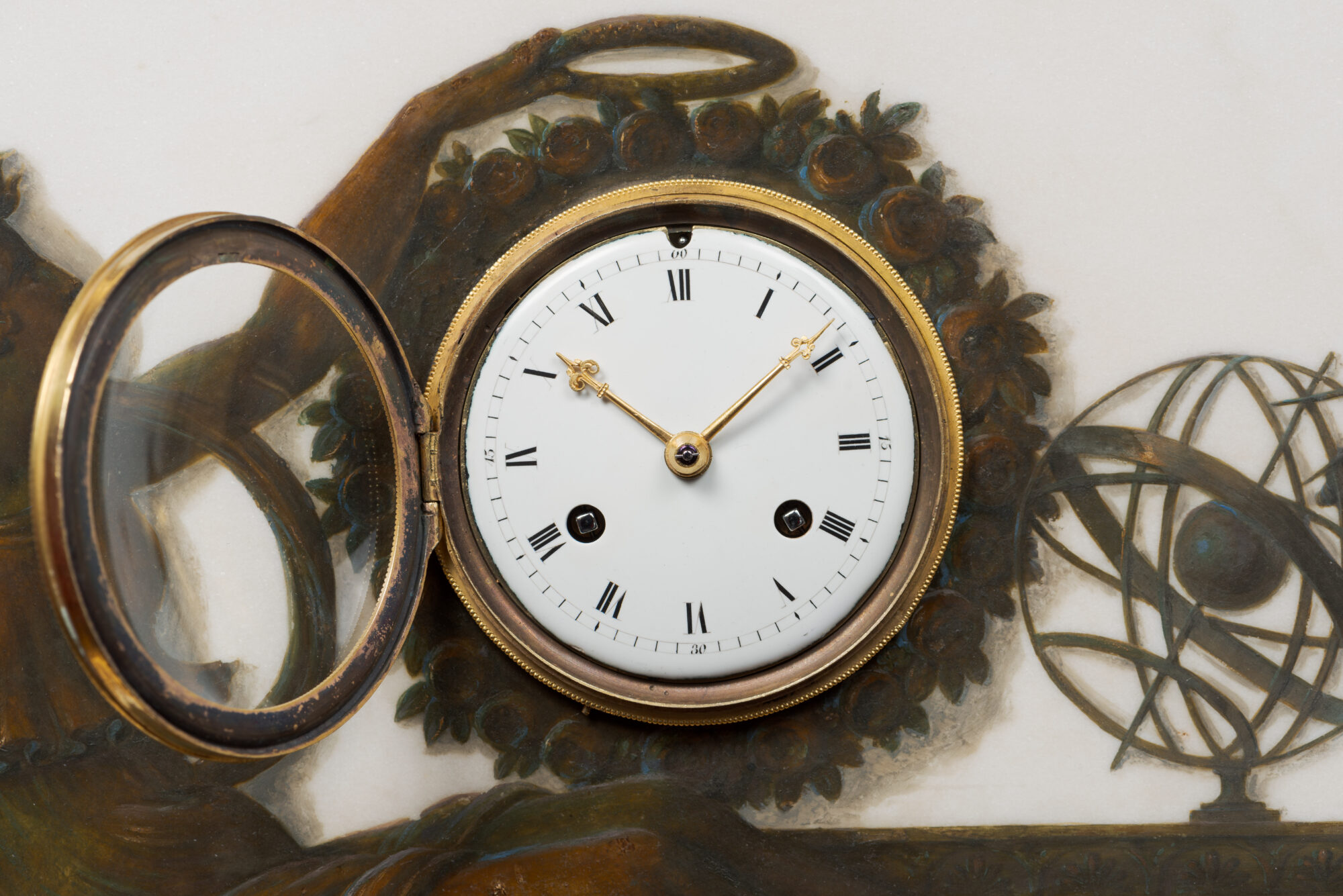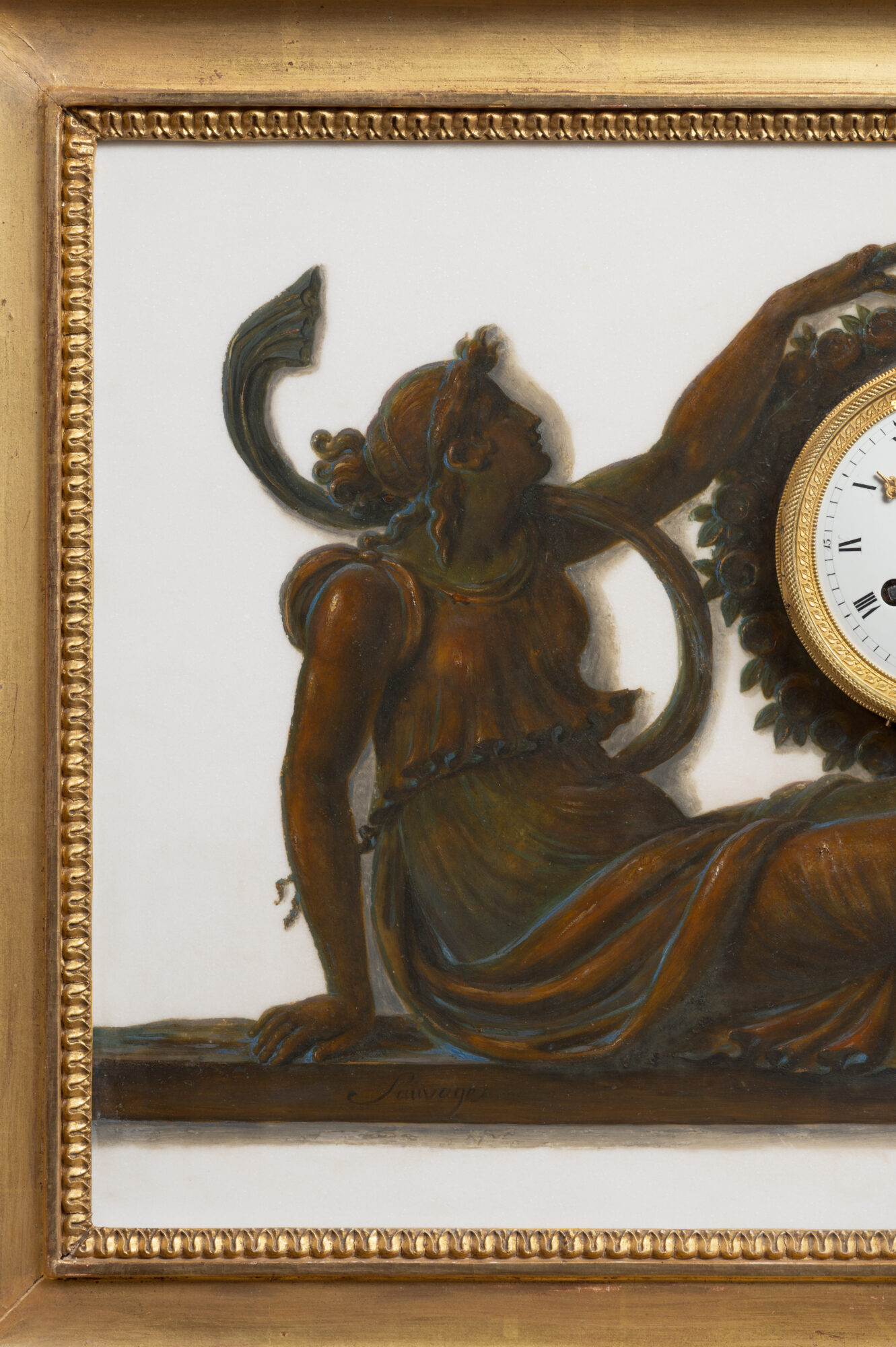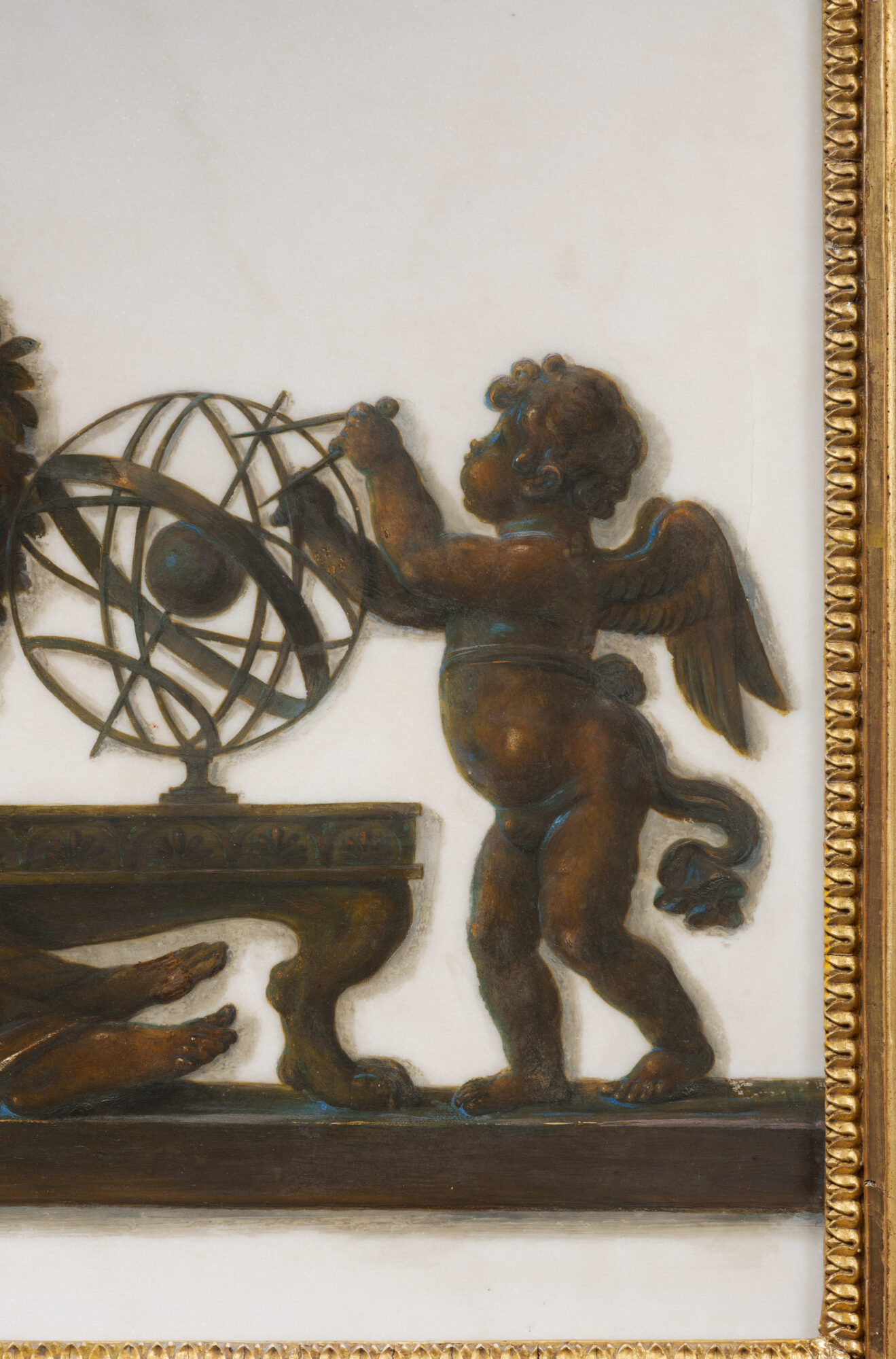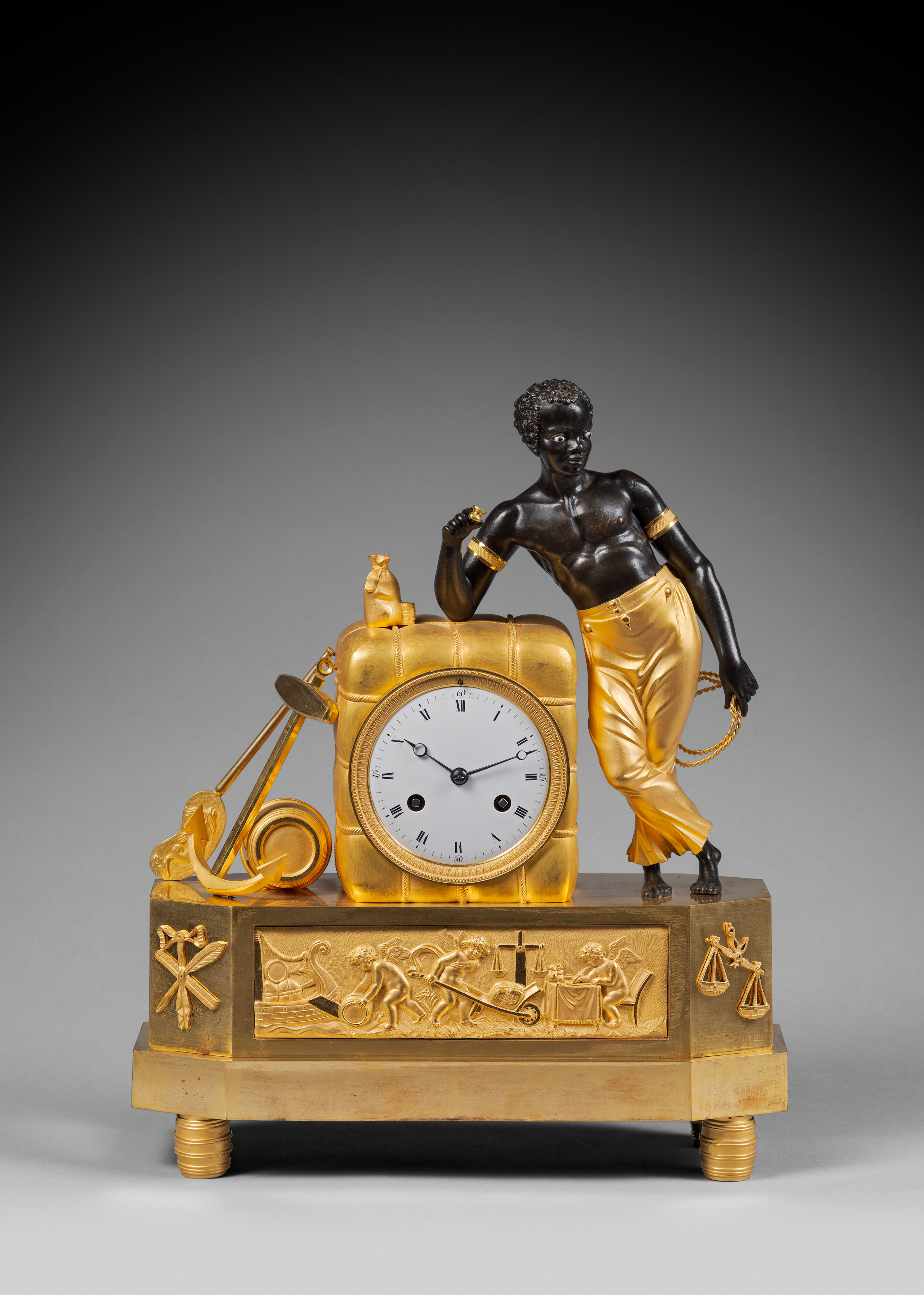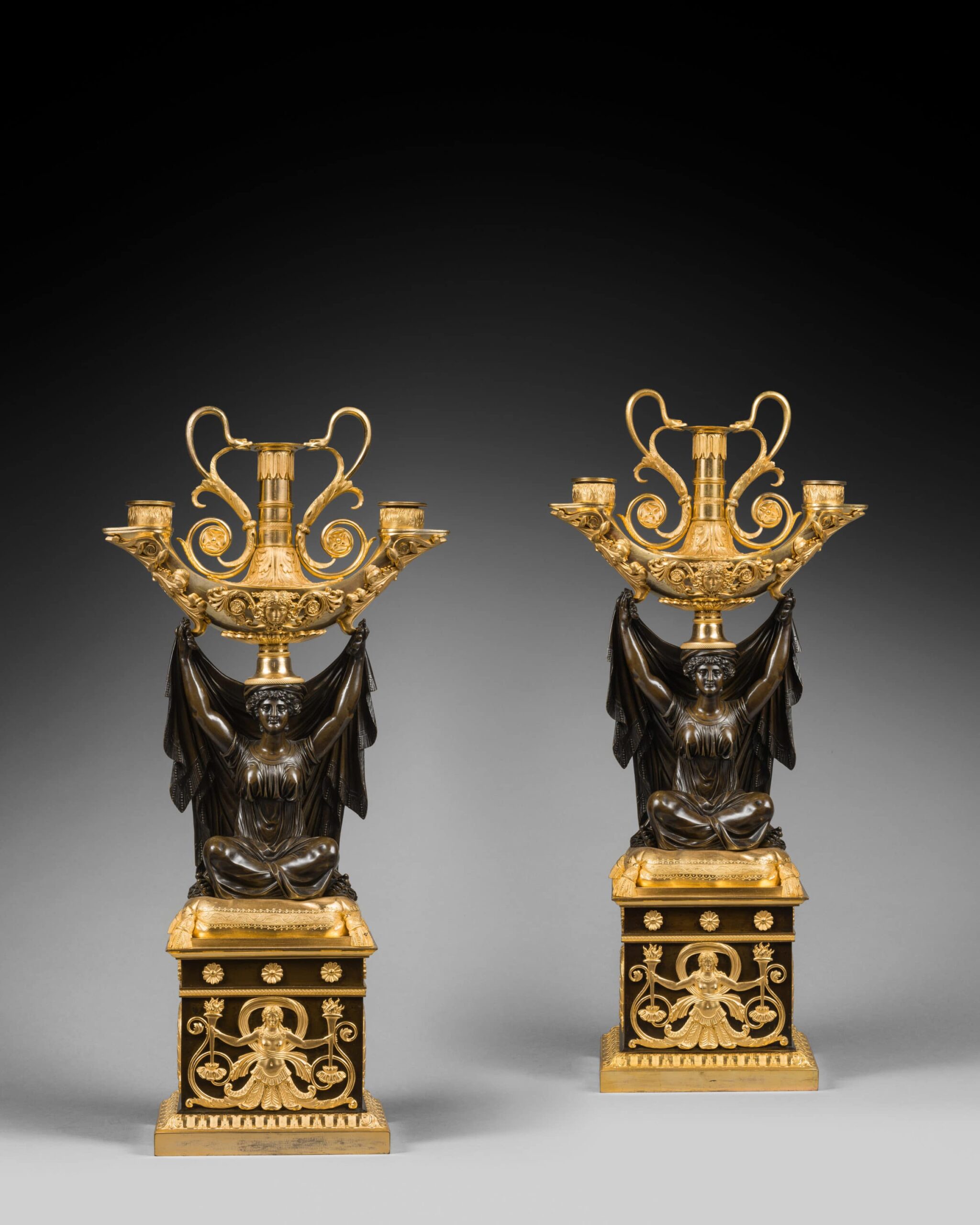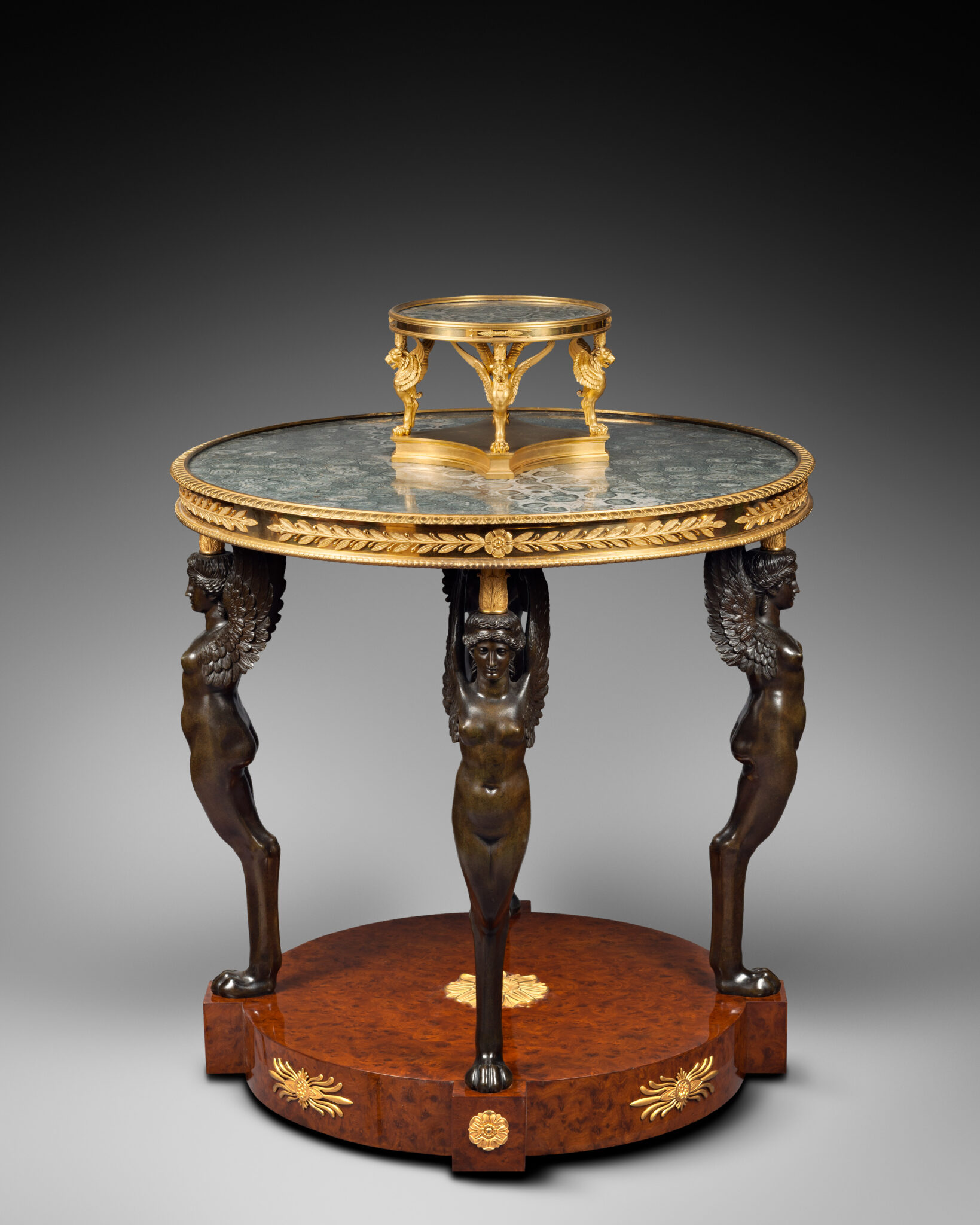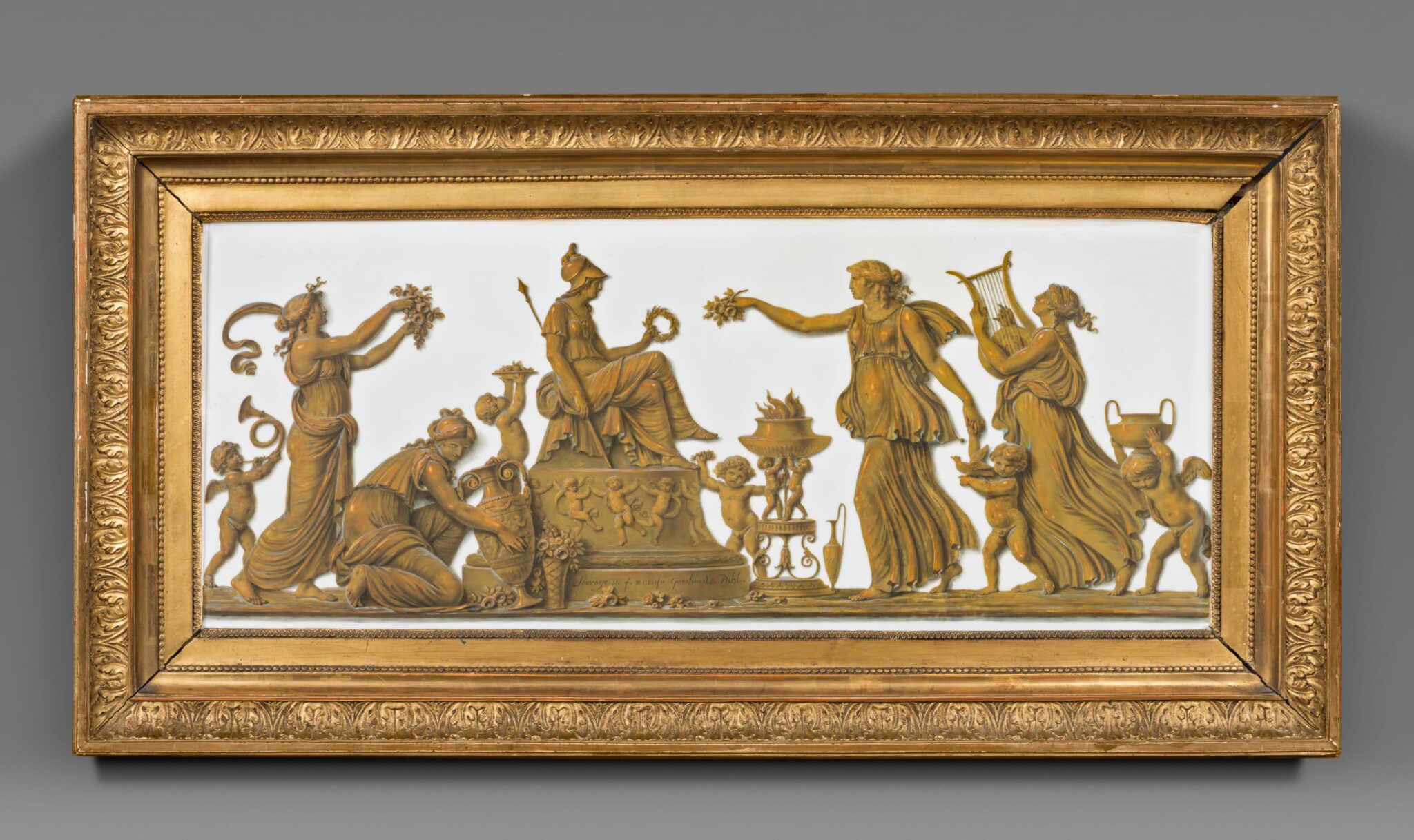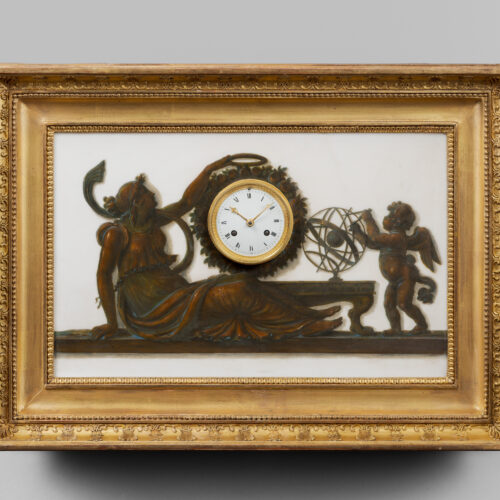A Rare Painting with Clock of White Carrara Marble with Trompe-l’œil Imitation Bronze Decoration with a Gilt Sculpted Wood or Stucco Frame
“The Coronation of Time”
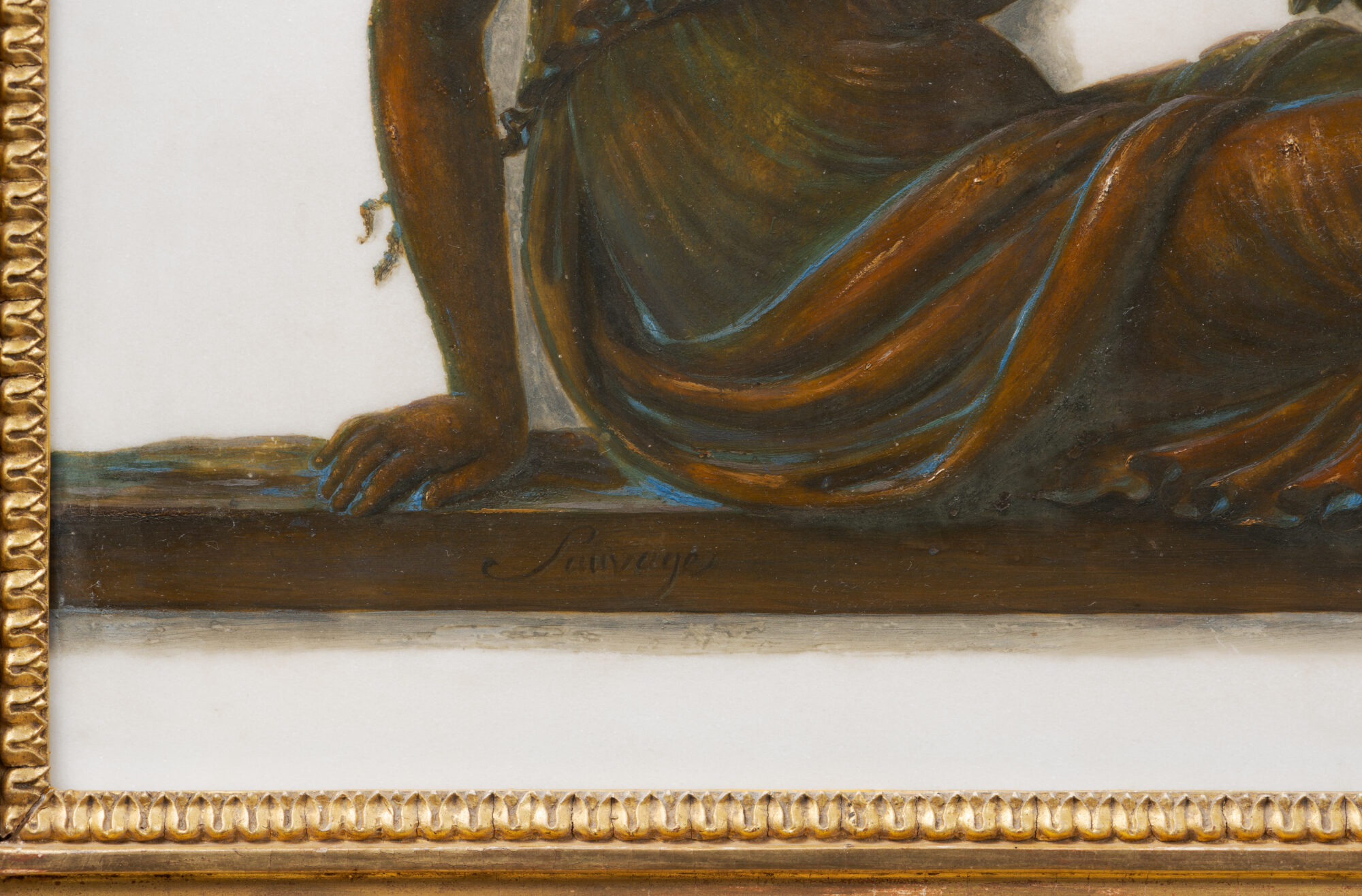
Trompe-l’œil Painting Signed “Sauvage” by the Artist Piat-Joseph Sauvage (1744-1818)
Paris, Empire period, circa 1800-1810
The circular white enamel dial indicates the Roman numeral hours and the Arabic numeral fifteen-minute intervals by means of two chased gilt bronze hands. The bronze or copper clock bezel is knurled. The hour and half-hour striking movement is fitted into a rectangular white statuary Carrara marble plaque with trompe-l’œil painting executed in shades of brown, imitating bronze. The painting stands out against the white ground that accentuates the perspective and the volume of the figures. In the center, the dial is surrounded by a wreath of flowers and leaves. On the left, a reclining female figure is depicted in profile; she is wearing antique robes, and is placing a wreath on the clock with her left hand. Opposite her, on the right side of the scene, a young winged boy is taking measurements with a compass on an armillary sphere that is placed on a low table with lions’ paw legs; the table is adorned with a frieze of stylized palmettes. The scene takes place on a terrace shown in slight perspective, which bears the signature “Sauvage”. The picture has a gilt wood or stucco frame with bead friezes, C-scrolls, palmettes and alternating bouquets. A frieze of water leaves completes the embellishments.
This rare painting with clock is a perfect example of the inventiveness of the talented Parisian artists and artisans of the Empire period, and in particular the painter Piat-Joseph Sauvage, who made a few other similar models. Among these, we should mention an example that is in an identical frame, in the collection of the Princes of Hesse in the Fasanerie Palace in Fulda (illustrated in the exhibition catalogue Gehäuse der Zeit, Uhren aus fünf Jahrhunderten im Besitz der Hessischen Hausstiftung, 2002, p. 102-103, catalogue n° 40). An archival document – the posthumous inventory of Count Antoine-François de Fourcroy (1755-1809) – a well-known scientist who worked with Lavoisier, mentions a clock of this type: “Another clock with a sculpted and gilt frame surrounded by shaded cameo paintings by Sauvage, estimated at 200 francs”.
Piat-Joseph Sauvage (1744 - 1818)
Was a Belgian painter, member of the Académie Royale in 1781, who became famous for his trompe-l’œil works imitating sculpture. In the 1780s, he participated in the decoration of the interiors of the royal châteaux of Rambouillet and Versailles, creating paintings on several different media, and using materials such as marble, ivory, and porcelain, and taking his inspiration from Greek and Roman antiquity and the classical vocabulary. As of 1797, he began to work with the Parisian Manufactory of Dihl and Guérhard, known as the “factory of the Duke d’Angoulême”, for in 1781 that aristocrat became its patron. He entrusted the direction of the factory to Christophe Erasmus Dihl and the Guérhard couple, who turned the factory into the main rival of the Sèvres Manufactory. The works produced by the factory with the participation of the painter Sauvage, were shown at prestigious exhibitions. Today the extant plaques made by them are extremely rare and generally to be found in prestigious French and international museums.
